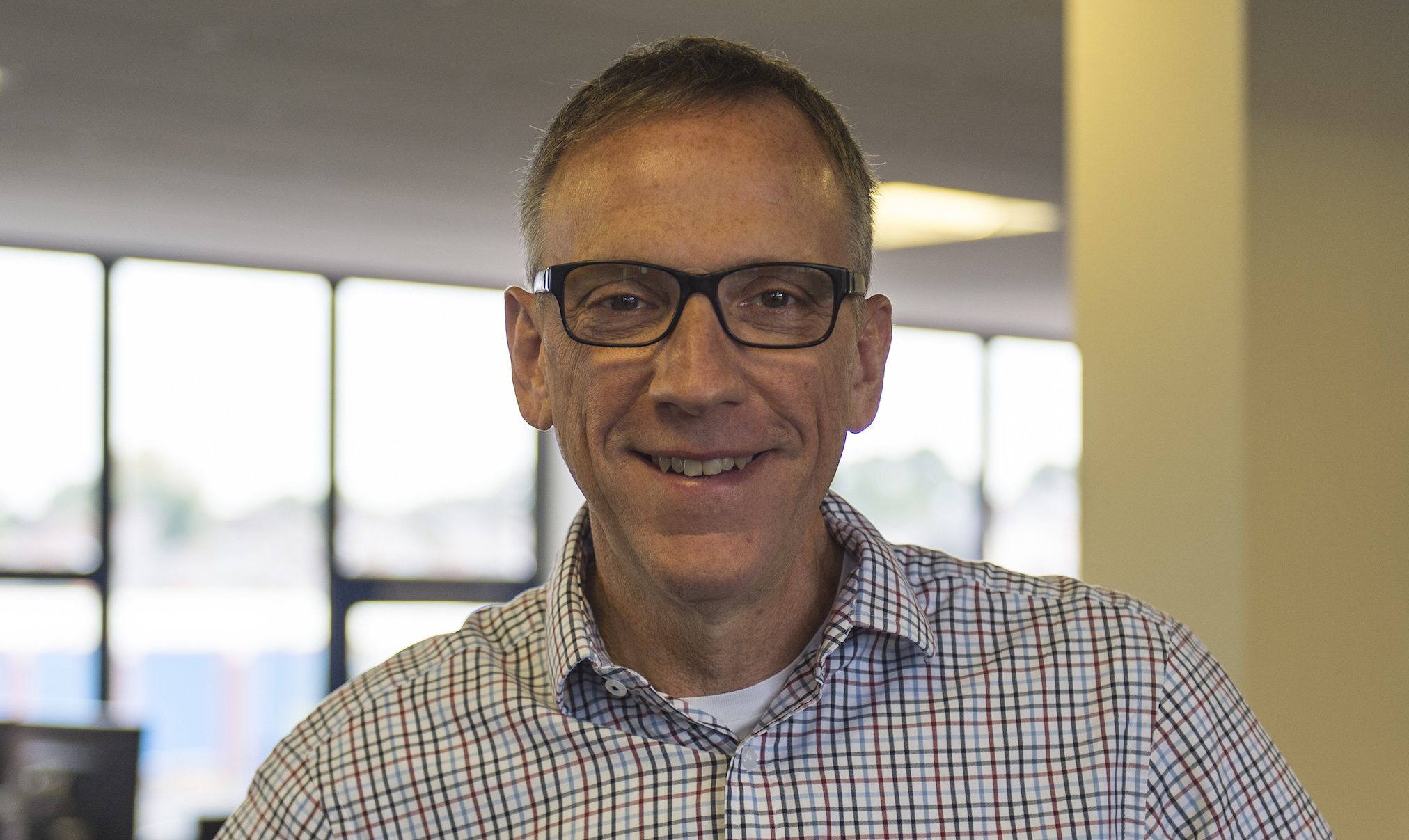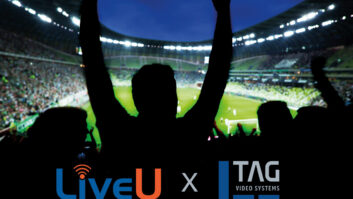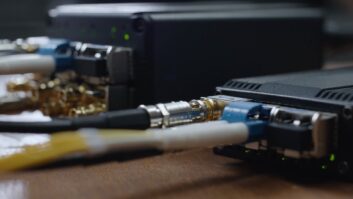
The CEO of Datapath talks to Paddy Baker about growing the business internationally, the video over IP revolution and why working in pro AV is preferable to the mobile phone industry.
Datapath was founded in 1982 as a manufacturer of computer graphics products for mini computers, and later for PCs. Company milestones included multi-display solutions for financial trading desks in the mid-1990s, the company’s first graphics cards for videowalls in 2000, and its first video streaming software in 2003. Today it is best known for its controllers for videowalls and multiple displays, video capture and graphics cards, and its video streaming and compression technologies.
Expansion
In his eight years as CEO, perhaps the most obvious thing that Bjorn Krylander has brought to Datapath is expansion. “We’re now about three times the size in every respect – in terms of people or money,” he says. “When I joined, the whole company was in Derby.” Now, not only has the company moved to much larger premises in that city, but it has opened sales offices in the US, Japan, France and China, and has grown its sales presence elsewhere, including the Middle East, eastern Europe and other parts of Asia including Singapore and South Korea. “We try to get closer to our customers, provide them better support, and obviously we continue to grow the company and increase sales,” he explains.
The US office is located in Philadelphia because the company bought out a successful distributor, DN Nye, in 2014. “We figured that they were almost exclusively selling Datapath products and they were very much working as an extension of our own sales team – so the natural conclusion of that was to bring them within Datapath.”
The company has also created a regional sales presence within the US – “moving the sales team close to the customers,” as Krylander puts it. “The total sales volume for videowall systems is much bigger in North America than it is in Europe. Our market share there is okay, but it’s much greater in Europe. We really want to make it a more even balance, so our growth opportunity is clearly considerable still in North America.”
Does he find the sales process differs in different regions of the world? While clearly there are big differences between, say, the US and Japan, he prefers to focus on the commonalities: “Qualifying the opportunities we’re put in front of, understanding the real substance behind them, whether the new customer you’re talking to has got a real need and has got the financing to support what they are trying to do. You put your resources to best use by focusing on real opportunities, which actually can yield some sales.
“What’s perhaps less universal is the way you talk to customers and what resonates with customers. Obviously American people are a lot more willing to take risks and try things out, while in Japan one analyses things to the nth degree before one commits. Once you have worked through all the potential risks and issues, you are generally off making quick progress in Japan. You put a lot of effort in upfront, but you get a customer that is willing to work with you for a long time to come.”
Video over IP
Video over IP is a trend that he wants Datapath to be part of. ”We launched our SQX technology for IP streaming directly to videowall controllers two years ago. We have primarily offered decode solutions to date: the ability to decode CCTV cameras, and other types of video streams, directly onto the controller makes that a very scalable solution… But in the next year you’ll probably see a lot more of the encode-type solutions from Datapath, where display controllers will communicate with each other, and share content, making for a much more fluid user experience. Content will be available where it’s needed independently of what the source video format is, transported to where it’s required and can be consumed with much less effort where it’s required.” The mantra, he says, is “anything, anywhere”.
Datapath is not a member of the SDVoE Alliance “at the moment,” although “we have certainly been considering joining and using the technology.” He doesn’t want to share many specifics, but adds: “There will be a range of products from Datapath in the area of video distribution over IP eventually – and some of those may be SDVoE compatible as well.”
He sees the rise of IP video as causing considerable industry disruption. “The whole area of IP is fundamentally changing how video systems will be built in the future. The ability to route video to and consume video in a much more fluid way will be greatly enhanced for users. It will be much easier to build networks eventually.” However, he says it remains to be seen “who the industry leaders will be, and which technologies win the battle eventually. It will put the industry in for some quite major change.”
Another significant development for Datapath is “investing a lot in the application side of things. We want to make our display controllers more useful in more environments.” He mentions two specific examples here. The first is a plug-in software module that connects Datapath’s display controllers to Milestone’s VMS software for CCTV systems – and this, he says, “is clearly an area where we are likely to continue to put in effort”.
The second is Quant application-sharing software, where “we’re going to invest in building a better collaboration solution and interactive solution based on what we have done with Quant already.”
Can he see Datapath broadening its reach into more applications in the future? KVM is a possibility, he says: “If you connect a KVM system and the display controller often used in command and control environments, it’s quite possible to decode the KVM video stream from a source computer direct into our controller, instead of converting its source to video and then capturing that and putting it back into the display controller. I think that’s a likely development, but we’ll see more development for specific interfaces – KVM systems, video distribution systems and so forth – so we can interact more directly with them.
“The benefit of that is twofold: you reduce the cost of the total system solution because conversion between IP stream to video and back into a display controller is quite costly per stream; but you also have much better direct control putting a particular source in a particular place.”
Software focus
Does the direction of the industry mean a greater emphasis on software at the expense of hardware? “Absolutely. Our software team is twice the size of our hardware team, but as we jokingly say, the hardware team is only half software and the software team is only software. So the vast majority of what we do is software today, although some of it is strongly hardware related.”
Given that Krylander has worked across a number of tech industries during his career, I ask him how pro AV compares with other tech sectors. “The pro AV industry is a very nice industry… It’s a fairly fragmented industry. The financial view of that is that there is opportunity for consolidation – but from my point of view it also means that there’s a lot of innovation. There’s a lot of small companies with new ideas and it’s fairly easy to get a hearing. If you set up your own new company in the pro AV industry, you can create new products and there will always be someone who buys them. It’s a very nice environment to be in, where there’s many things being tried and many opportunities are being created.”
He draws a parallel with the mobile phone industry in the late 1980s, when he started out as an engineer with Ericsson. “But now it’s all been consolidated into basically Android and iPhone – you’re one or the other, and they’re very similar. Innovation there is quite limited at the moment; while things are moving forward, it’s in a very linear way. I prefer the pro AV industry by far.”
Outside work, Krylander is a keen cyclist. As chance would have it, one of the UK’s seven velodromes is just two miles from the Datapath office. ”We generally take anyone who wants to go for a spin on the velodrome once or twice a year. And I’m sure we’ll be doing it this summer. I’m a big fan of it, but I haven’t managed to get too many of my colleagues to join me on the track.
“There are quite a few of us here at Datapath who ride bicycles as a leisure activity. I’m afraid to say I’m by far the worst, doing it the most intensely. I think that no one would dispute that. “
He has also been known to bring his bike with him on business trips. “I took the bike with me and went out with the local ‘chain gang’ in Orlando last summer. If you’ve got the opportunity to go out with the locals, you not only get a lot of exercise and good fresh air, but you also get to meet people and see the city or the environment around it. I guess it’s similar to going for a run if you’re travelling in cities – but you do meet more people if you can join up with a local cycling club.”







